Mustang forced to adapt to climate crisis
Floods threaten not just the livelihoods of the inhabitants of Lubra, but also the village’s unique Bon Po heritage
As weather patterns change across the world, many communities impacted by the climate crisis go unnoticed, or are disregarded. Himalayan villages are suffering an increase in flash floods and droughts.
One such community is Lubra village in Lower Mustang, one of the few villages in Nepal fully practicing the Bön Po faith.
Lubra has over 800 years of cultural and ancestral significance. Established in the 12th century by Lama Yangton Tashi Gyaltsen, who is said to have crossed over from Tibet, made the area suitable for settlement by subduing the land’s unruly local spirits, and ensured the survival of the Bön belief.
Situated at 2,950m, the village today is home to over 100 inhabitants, and has a school with 90 children. Farming their own land, they also carry community responsibilities involving one member from each family.
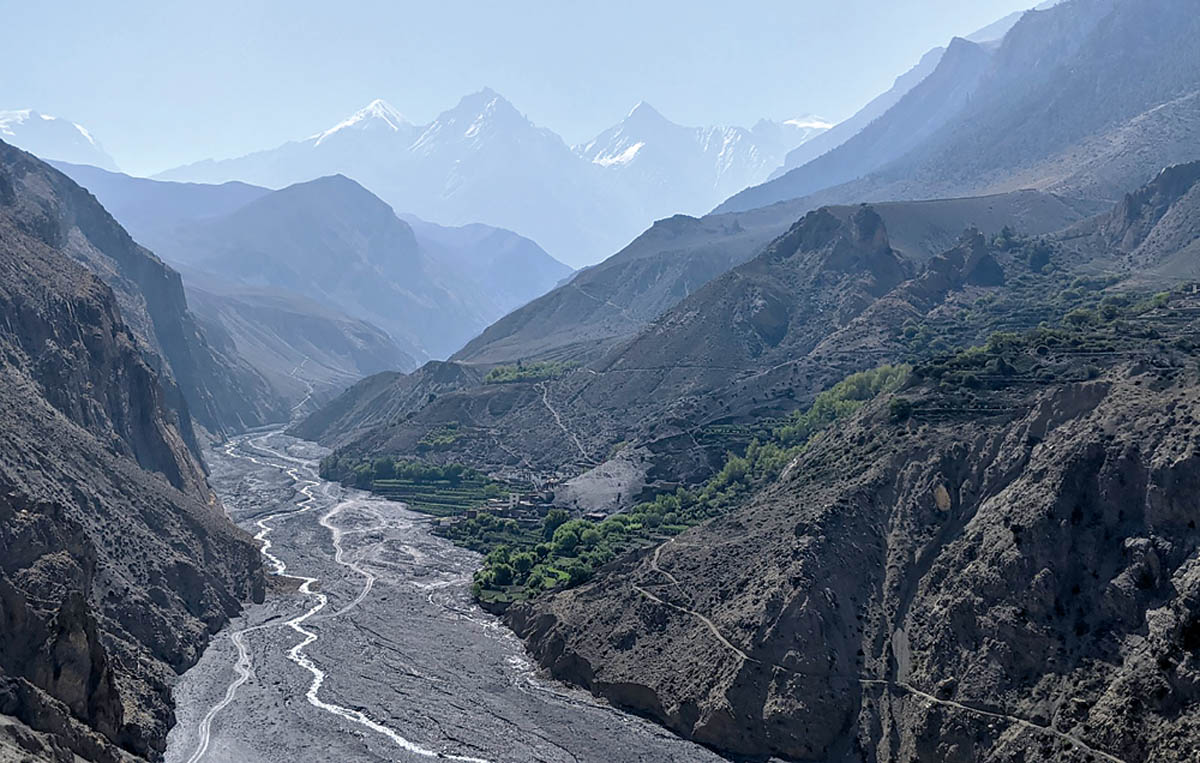
There are a handful of mud buildings, guesthouses and fields at the edge of Lubra River. A school, two monasteries, several chörten, a children’s hostel and water tanks span the rest of the land. Although small, Lubra is an important cultural component of Mustang.
Every year during the monsoon, the entire valley faces flash floods as the Lubra River’s trickle expands into a 150m wide debris flow of sediment and boulders, spanning the riverbed to meet the Kali Gandaki downstream.
Digital model showing the current state Lubra Village in relation to Lubra
River. Video: RONAN WALLACE
This turns the valley into a concrete mixer, as the sediment-stone-water turns into a viscous sludge. Higher up the valley, the water may not always be able to find passage through the sludge, causing it to be dammed. Eventually, the blockage gives way, bringing down a rush of aqueous concrete. These flood bursts repeat without fail over two months and swallow any obstacles in its path.
Increasingly frequent floods are directly attributed to climate change. Rising temperatures have been altering the water cycle across the Himalaya, including Mustang.
Read Also: Human face of a Himalayan climate crisis, Rastraraj Bhandari
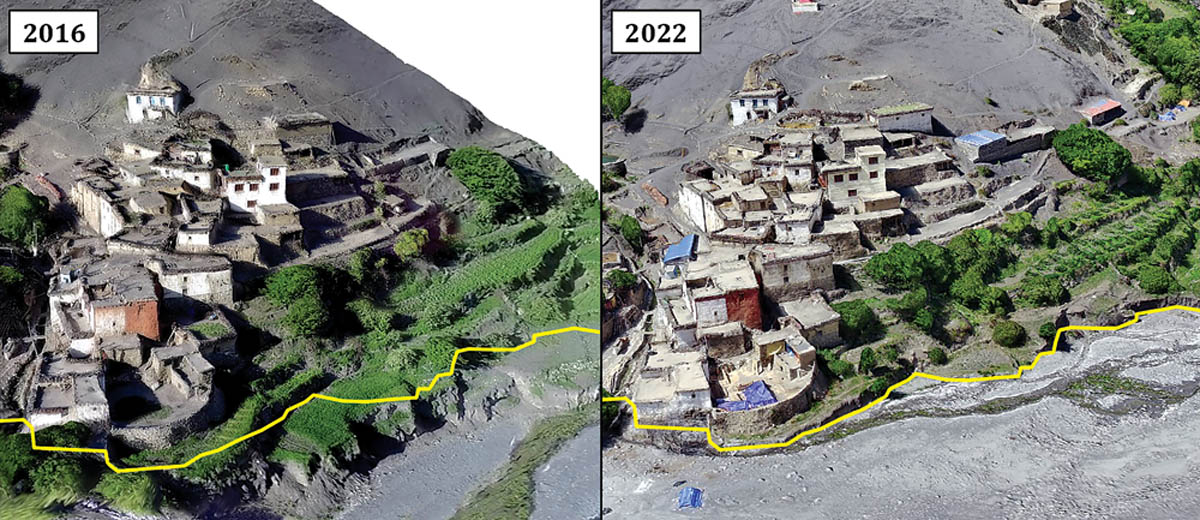
The region is in the Himalayan rain shadow, and monsoon clouds are blocked by the Annapurna and Dhaulagiri massifs. However, rain patterns are changing, and what used to be light, seasonal rain has turned to destructive downpours.
Glacial runoff has also been increasing over the last five years. Rangelands upriver from Lubra are deteriorating, loose soil is easily carried downriver in sudden floods.
For Lubra, this is disastrous. Living on the edge of the riverbank, families are sitting ducks. When the monsoon season concludes, new sediment sets and hardens like concrete, increasing the height of the riverbed, making the village more susceptible to damage. Over the last decade alone, the riverbed has risen by an astounding 12m in elevation, and buried terrace farms.
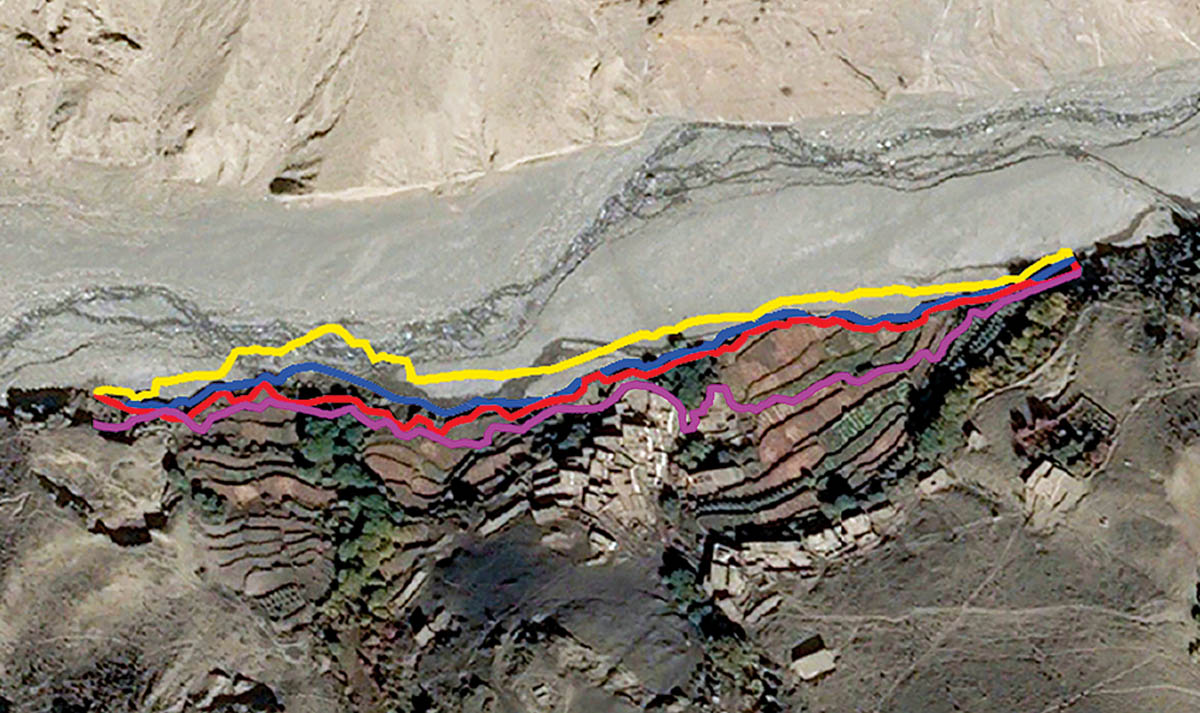

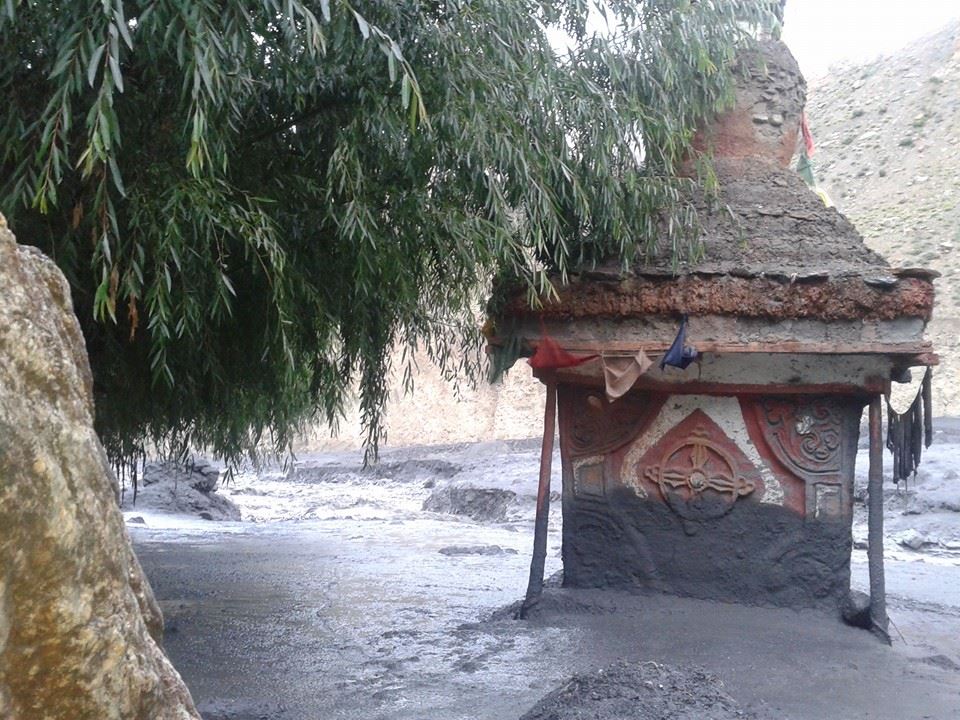
In the 2021 monsoon, homes were damaged, leaving two families to take shelter in a guesthouse for three months. Jzikmey, 25, saw the flood rush into the lower most room of his home. Having lived his entire life in Lubra, he felt the loss, but said: “It is what it is. If the next monsoon is like the last one, the rest of my house will be gone.”
Because the majority of homes are stacked upon each other on the slope, the main village stands as one building, each home depending on the other for structural and foundational strength.
Damage to one home threatens the structural integrity of the entire village, putting families in harm's way. The next two monsoon seasons could leave several families without homes. “In next ten years, the entire village could be gone,” Jzikmey says.
For over 20 years, families have tried to adapt by building rock walls using gabion boxes and digging trenches to redirect flow. However, these walls are not as effective as they need to be, since floods flow over the barriers.
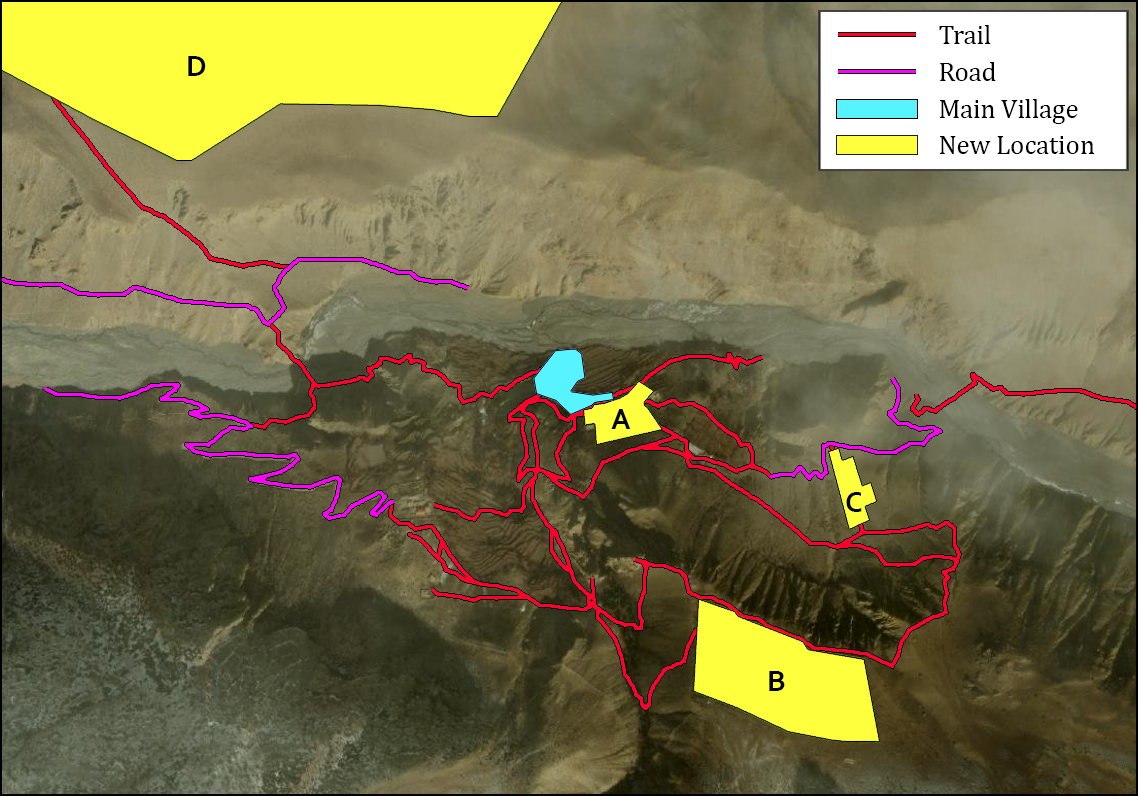
The community has discussed relocating the entire village to a safer place. However, relocation is no easy task. There are complexities in both civil engineering and the community's opinion.
Moving the entire village means considering every aspect of Lubra’s way of life, and asking if it will thrive in the new location. Lubra is having to rethink hundreds of years of cultural and ancestral heritage. Much planning needs to happen, but time is running out.
Additionally, families face fears of land security, as allotted plots for personal use might not be guaranteed.


As the riverbed continues to rise, the need for an immediate, community-conscious solution is evident and imperative. Floods threaten not only the livelihoods of the community, but the security of Bön traditions as well.
Decades of culturally significant land is being wiped out, and many families fear that their ancestral heritage will go with it.
Read Also: Climate-smarter Himalayan infrastructure, Sonia Awale
